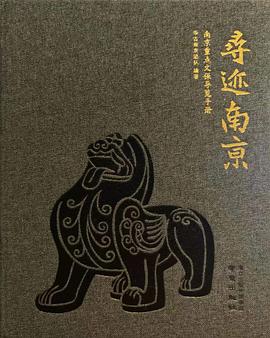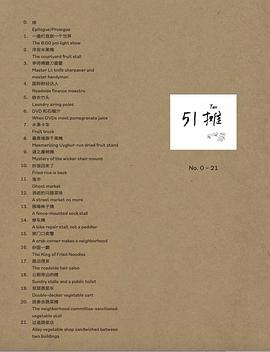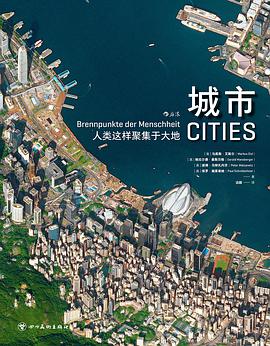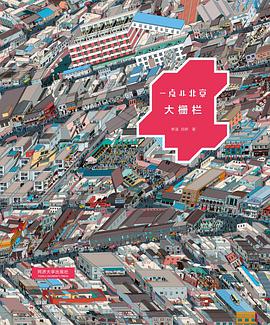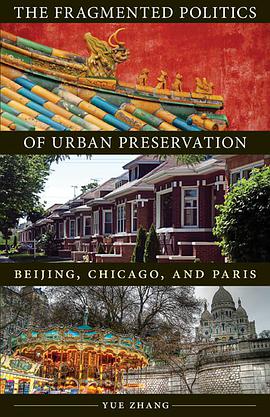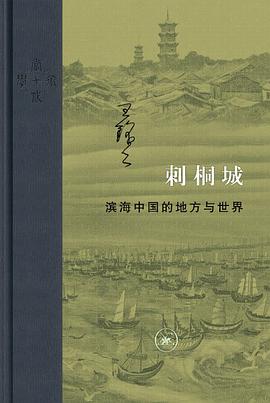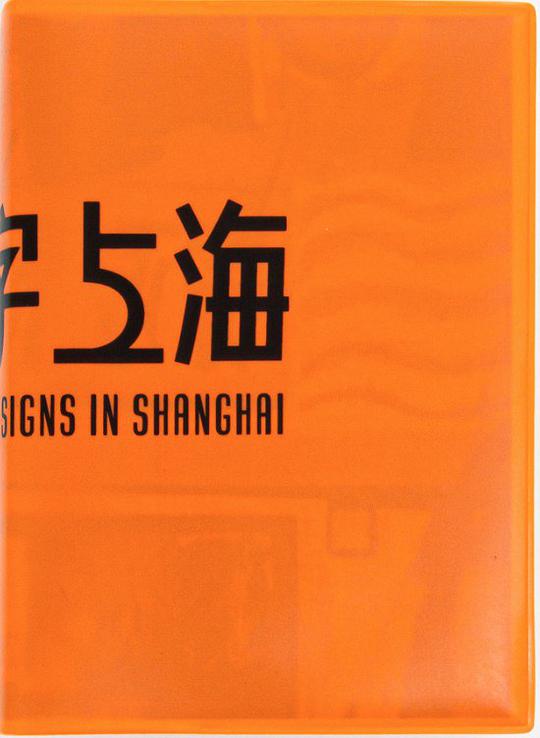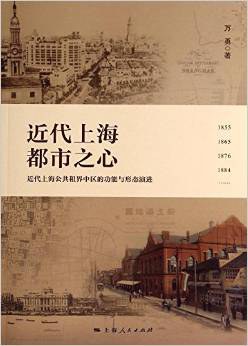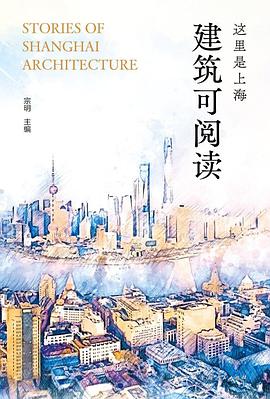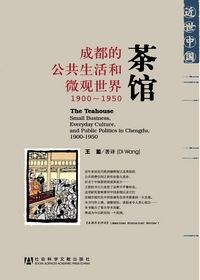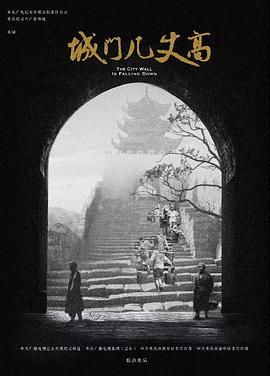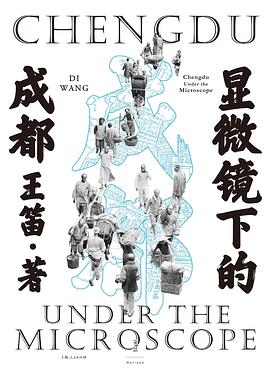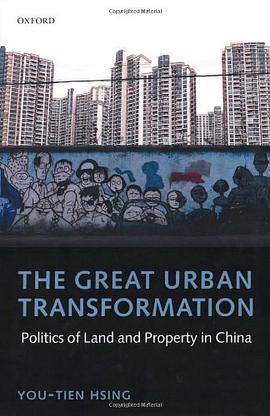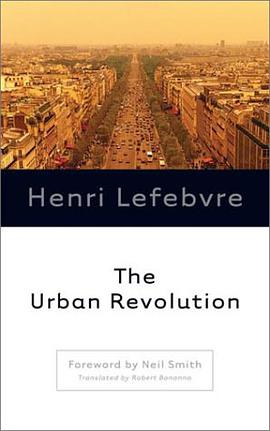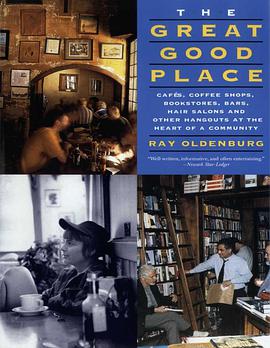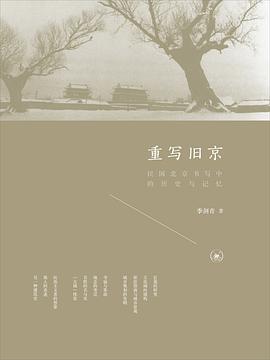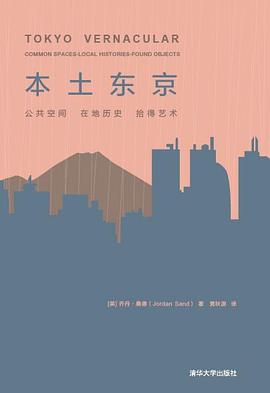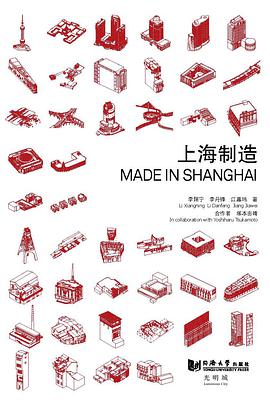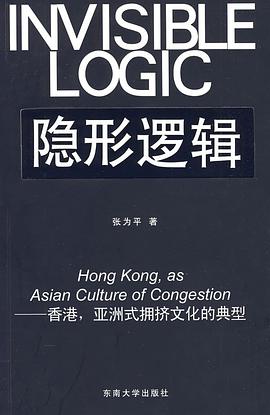城市
51摊 豆瓣
51 Tan
作者:
一位记录者
译者:
Animesh Narain
51人 & 李俊峰@水獭文化
2021
- 10
《51摊》(51 Tan)是一个持续性的记录项目。作者作为第十一届上海双年展(2016-17)51人项目的参与者之一,以绘画速写勾勒出她以顾客或路人的视角体察这些散落在当时上海特定位置的摊贩,记录他们的摆设细节、构造逻辑、材质用料、空间策略和街头对话——精妙而富有人情。及至出版,书中的很多摊贩已不得再见。摊贩把自己的生意建立在流动中人和人的短暂信任之上,却成为城市治理下手最轻易、效果最明显的解决对象。
51 Tan (namely 51 Stalls, or 51 Street Vendors) is an ongoing documentation project. The author’s drawings and sketches outline her observation of these stalls, scattered in specific locations in Shanghai at the time, from the perspective of a customer or a passer-by, recording the details of their set-up, rationale of the design, the materials used, spatial strategies and even street conversations – both subtle and human. By the time of publication, many of the stallholders in the book had already disappeared. The vendors, who built their businesses on the fleeting trust of people on the move, have become the easiest and most effective targets for urban governance to tackle.
2021年,在第一版售罄并筹划再版时,51人邀请作者增补了疫情后上海街头的四个摊和2016年未及收录的两则“拾遗”,总共合成45篇,并请在沪生活多年的51人之友、印度人安明实(Animesh Narain)对画中文字进行了英语重译,旨在将此地街道的故事以另一种语言找到更多的读者——发生和消失在上海街道的这些场景和人物,在当下的南方世界具有广泛的意义。
In 2021, when the first edition sold out and a reprint was planned, 51 Personae invited Feile to add four more stalls from the streets of Shanghai after the Covid-19 pandemic and two “leftovers” that had not been included in 2016. Animesh Narain, a friend of 51 Personae who had been living in Shanghai for some years, was invited to retranslate the text in English, with the aim of bringing the stories of the streets here to a wider audience in another language – we believe that this 51 Tan (2021 Edition) scenes and people that happened and disappeared on the streets of Shanghai have a widely concerned significance in the Global South today.
51 Tan (namely 51 Stalls, or 51 Street Vendors) is an ongoing documentation project. The author’s drawings and sketches outline her observation of these stalls, scattered in specific locations in Shanghai at the time, from the perspective of a customer or a passer-by, recording the details of their set-up, rationale of the design, the materials used, spatial strategies and even street conversations – both subtle and human. By the time of publication, many of the stallholders in the book had already disappeared. The vendors, who built their businesses on the fleeting trust of people on the move, have become the easiest and most effective targets for urban governance to tackle.
2021年,在第一版售罄并筹划再版时,51人邀请作者增补了疫情后上海街头的四个摊和2016年未及收录的两则“拾遗”,总共合成45篇,并请在沪生活多年的51人之友、印度人安明实(Animesh Narain)对画中文字进行了英语重译,旨在将此地街道的故事以另一种语言找到更多的读者——发生和消失在上海街道的这些场景和人物,在当下的南方世界具有广泛的意义。
In 2021, when the first edition sold out and a reprint was planned, 51 Personae invited Feile to add four more stalls from the streets of Shanghai after the Covid-19 pandemic and two “leftovers” that had not been included in 2016. Animesh Narain, a friend of 51 Personae who had been living in Shanghai for some years, was invited to retranslate the text in English, with the aim of bringing the stories of the streets here to a wider audience in another language – we believe that this 51 Tan (2021 Edition) scenes and people that happened and disappeared on the streets of Shanghai have a widely concerned significance in the Global South today.
城市 豆瓣
CITIES: Brennpunkte der Menschheit
作者:
[奥] 马库斯·艾斯尔
/
格拉尔德·曼斯贝格
…
译者:
边超
后浪丨四川美术出版社
2021
- 4
自然、政治、经济、文化,如何决定一个城市的历史道路?
形式、图案、色彩、结构,多样的城市样貌如何折射人类对其影响?
金融中心、政治中心、教育中心、工业中心……为何一些城市具备重要功能?
城市如何如同生物一样源源不断的交流运转?
山间、水上、沙漠,那些非同寻常的城市如何建设如何维护?
如何迎接当前的挑战?如何为未来做准备?城市的未来何去何从?
·崛起、衰落和新生 ·色彩和结构 ·聚光灯下的城市 ·活力城市 ·非同寻常的城市 ·未来的城市
6大板块,跨越时空
全方位展现人类这样聚集于大地的——城市
☆ 编辑推荐
◎绝美典藏品质
百余幅优质卫星图像,大开本精装高清展现; 高档太空梭哑粉纸全彩印刷,还原每一处细节
◎科技与美学交融
从数十万米高空俯瞰地球,欣赏全球特色城市超乎想象的壮美图景; 如“外星人”一般的崭新视角,开启非凡的太空视域
◎覆盖全球范围特色城市
无论无比繁闹的国际大都市,还是罕有人迹的安第斯“金城”拉林科纳达 让人看见即使亲临当地也无法领略到的独特视角,展现多元而震撼的人类文明印迹
◎深切的人文关怀
直观记录人类生存环境的急速变化及对自然的影响, 呼吁公众关注环保,反思究竟应如何做到“诗意地栖居”
☆内容简介
本书收录了百余幅高清卫星摄影图像,展示了世界不同类型城市的规模、结构的多样性,并用言辞优美的文字简要介绍了当地自然条件、城市特点及风土人情。从距离地球400千米到900千米的高空俯瞰地球,无论是流光溢彩的国际大都市伦敦、巴黎,还是人迹罕至的安第斯山脉中的“金城”,抑或是空无一人的“鬼城”普里皮亚季,城市的丰富色彩无时无刻不在冲击着人们的视域,在人类文明中留下浓墨重彩的一笔。
这本大开本的图集也集中展现了人类活动对环境造成的影响,聚焦于人类生存空间中那些令人着迷的细节,期望以这种直观的方式引导公众反思自身与居住环境之间的关系,意识到自身改变自然的能力,并承担起对未来应负的责任。
形式、图案、色彩、结构,多样的城市样貌如何折射人类对其影响?
金融中心、政治中心、教育中心、工业中心……为何一些城市具备重要功能?
城市如何如同生物一样源源不断的交流运转?
山间、水上、沙漠,那些非同寻常的城市如何建设如何维护?
如何迎接当前的挑战?如何为未来做准备?城市的未来何去何从?
·崛起、衰落和新生 ·色彩和结构 ·聚光灯下的城市 ·活力城市 ·非同寻常的城市 ·未来的城市
6大板块,跨越时空
全方位展现人类这样聚集于大地的——城市
☆ 编辑推荐
◎绝美典藏品质
百余幅优质卫星图像,大开本精装高清展现; 高档太空梭哑粉纸全彩印刷,还原每一处细节
◎科技与美学交融
从数十万米高空俯瞰地球,欣赏全球特色城市超乎想象的壮美图景; 如“外星人”一般的崭新视角,开启非凡的太空视域
◎覆盖全球范围特色城市
无论无比繁闹的国际大都市,还是罕有人迹的安第斯“金城”拉林科纳达 让人看见即使亲临当地也无法领略到的独特视角,展现多元而震撼的人类文明印迹
◎深切的人文关怀
直观记录人类生存环境的急速变化及对自然的影响, 呼吁公众关注环保,反思究竟应如何做到“诗意地栖居”
☆内容简介
本书收录了百余幅高清卫星摄影图像,展示了世界不同类型城市的规模、结构的多样性,并用言辞优美的文字简要介绍了当地自然条件、城市特点及风土人情。从距离地球400千米到900千米的高空俯瞰地球,无论是流光溢彩的国际大都市伦敦、巴黎,还是人迹罕至的安第斯山脉中的“金城”,抑或是空无一人的“鬼城”普里皮亚季,城市的丰富色彩无时无刻不在冲击着人们的视域,在人类文明中留下浓墨重彩的一笔。
这本大开本的图集也集中展现了人类活动对环境造成的影响,聚焦于人类生存空间中那些令人着迷的细节,期望以这种直观的方式引导公众反思自身与居住环境之间的关系,意识到自身改变自然的能力,并承担起对未来应负的责任。
一点儿北京·大栅栏 豆瓣
作者:
李涵/胡妍
2015
- 9
《大栅栏》,是继“中国最美的书”《一点儿北京》之《三里屯》《七九八》《南锣鼓巷》后,全新的城市绘本作品。以更优美的画面,更生动的情节,图解北京“大栅栏”胡同里最有趣的10个空间。
全景式的轴测图将大栅栏更新计划里10个精妙的空间翔实生动的呈现出来,其中有建筑师所熟悉的胡同改造,也有大部分市民陌生的宗教场所,有餐馆咖啡厅这样的休闲消费空间,也有设计师和技师的私人工作室。本书也是一部精美的建筑童话。10个空间背后10段通过对当事人的采访提炼而来的或俏皮或深刻的故事,带领读者跨越建筑而接近最真实的生活,在方寸之间,凝聚了城市无尽的“掌故”。
书中所建构的北京大栅栏,包括漫画描绘的大栅栏今天的小故事,和文字记述的大栅栏的前世今朝。通过细腻精美的画面和朴实平和的叙述,作者希望能够呈现胡同的美好与诗意,同时也借此唤起大家对有关旧城改造的城市话题的更多关注。
全景式的轴测图将大栅栏更新计划里10个精妙的空间翔实生动的呈现出来,其中有建筑师所熟悉的胡同改造,也有大部分市民陌生的宗教场所,有餐馆咖啡厅这样的休闲消费空间,也有设计师和技师的私人工作室。本书也是一部精美的建筑童话。10个空间背后10段通过对当事人的采访提炼而来的或俏皮或深刻的故事,带领读者跨越建筑而接近最真实的生活,在方寸之间,凝聚了城市无尽的“掌故”。
书中所建构的北京大栅栏,包括漫画描绘的大栅栏今天的小故事,和文字记述的大栅栏的前世今朝。通过细腻精美的画面和朴实平和的叙述,作者希望能够呈现胡同的美好与诗意,同时也借此唤起大家对有关旧城改造的城市话题的更多关注。
The Fragmented Politics of Urban Preservation 豆瓣
作者:
Yue Zhang
Univ Of Minnesota Press
2013
- 8
While urban preservation is almost as old as cities themselves, it has become increasingly controversial in modern cities. In this book, Yue Zhang presents a cross-national comparative analysis of the politics of urban preservation. Based on comprehensive archival research and more than two hundred in-depth interviews in Beijing, Chicago, and Paris, Zhang finds that urban preservation provides a tool for diverse political and social actors to frame their propositions and advance their favored courses of action.
In cities from West to East, divergent political and economic interests have caused urban preservation to become contested. Exploring three of the world’s great cities, Zhang deftly navigates readers through each case study, illustrating the complexities of the politics of urban preservation in each city. In Beijing, urban preservation was integral to promoting economic growth and enhancing the city’s image during the lead-up to the 2008 Olympics; in Chicago, it is used to increase property values and revitalize neighborhoods; and in Paris, it offers a channel for national and municipal governments to compete for control over urban space.
Although urban preservation serves various purposes in these cities, Zhang explains how different types of political fragmentation have affected the implementation of preservation initiatives in predictable ways, thus generating distinct patterns of urban preservation. A comparative urban politics study of unusual breadth, The Fragmented Politics of Urban Preservation gives us insight into the complex policy process of urban preservation through which political institutions are intertwined with interests and inclinations, fundamentally shaping the direction of urban development, the physical forms of cities, and the lives of citizens.
In cities from West to East, divergent political and economic interests have caused urban preservation to become contested. Exploring three of the world’s great cities, Zhang deftly navigates readers through each case study, illustrating the complexities of the politics of urban preservation in each city. In Beijing, urban preservation was integral to promoting economic growth and enhancing the city’s image during the lead-up to the 2008 Olympics; in Chicago, it is used to increase property values and revitalize neighborhoods; and in Paris, it offers a channel for national and municipal governments to compete for control over urban space.
Although urban preservation serves various purposes in these cities, Zhang explains how different types of political fragmentation have affected the implementation of preservation initiatives in predictable ways, thus generating distinct patterns of urban preservation. A comparative urban politics study of unusual breadth, The Fragmented Politics of Urban Preservation gives us insight into the complex policy process of urban preservation through which political institutions are intertwined with interests and inclinations, fundamentally shaping the direction of urban development, the physical forms of cities, and the lives of citizens.
刺桐城 豆瓣
逝去的繁荣
5.5 (8 个评分)
作者:
王铭铭
生活·读书·新知三联书店
2018
- 4
本书以滨海城市泉州为对象,考察了其从公元三世纪北方汉人南下入闽的初期阶段,到1949年之间一部漫长的区域史和城市发展史,实为一部内容丰瞻的“泉州传”。作者用历史人类学的方法,综合了地方文史研究、施坚雅的经济空间理论及克拉克的区域网络史分析,对泉州城的兴起、成熟、兴盛和衰落,做了线索性的宏观铺陈,并重点分析了泉州在宋元时代文化多元主义影响下的迅速发展和商贸繁盛,以及明清以来在本土主义意识形态及西方帝国主义势力的双重压力下出现的权力、经济与文化的转型。
作者通过自下而上地叙述一个地方的历史转型,一方面揭示域外与本土交错关系下泉州的“古今之变”,说明其演变过程是在家庭、地方社会、国家与更大空间范围的世界之间互动的历史产物;另一方面借助历史学和人类学的辩证,对主流的进化史观、民族国家叙事和世界史叙事提出不同的看法,从而为反思支配历史叙述的观念形态开辟了一条新的路径。
本书初版于1999年,原名《逝去的繁荣》。此次再版,作者加写了近两万字的“再版自序”,并更改书名为《刺桐城》。
作者通过自下而上地叙述一个地方的历史转型,一方面揭示域外与本土交错关系下泉州的“古今之变”,说明其演变过程是在家庭、地方社会、国家与更大空间范围的世界之间互动的历史产物;另一方面借助历史学和人类学的辩证,对主流的进化史观、民族国家叙事和世界史叙事提出不同的看法,从而为反思支配历史叙述的观念形态开辟了一条新的路径。
本书初版于1999年,原名《逝去的繁荣》。此次再版,作者加写了近两万字的“再版自序”,并更改书名为《刺桐城》。
隐字上海 豆瓣
作者:
格里董
/
施佳宇
…
The Type
2020
- 9
倘若看得仔细些,上海的街头是有双重模样的。与高耸入云的摩天大楼和时尚名品商店共存的,还有端庄的石库门,狭窄的小弄堂,以及旧时光里的店面招牌。曾经的十里洋场,有幸在这些隐秘的角落里得以重现。 时代变迁,许多城市正在改头换面的浪潮中迅速丢弃自己原有的景观。作为曾经的「东方巴黎」,上海的文字风景也正在经历着巨大的消亡。近年来中国各大城市相继开展以「市容更新」为名的行动,拆除店铺和招牌,却偶尔揭开了隐藏在背后的年代更久远的老招牌或文字,犹如意外发现的考古现场,让人觉得十分有趣。 「隐字」风景大抵有两种:昔日落在街角或弄堂深处的烟杂店、酱油店、副食品店,柴米油盐酱醋茶,手写招牌显得朴拙而亲切;或是隐藏在拆除的招牌里层、新搭建的脚手架背后、碎石瓦砾间的「字体遗址」,其背后的空间早已易主或不复存在,但偶尔残留的招牌仍能带我们闪回到彼时的马路风景中——气味浓郁的是「永好理发店」,污渍斑驳的是「第一油酱店」,色彩分明的是「临青绸布店」,嘎吱作响的是「明峰维修店」……干净利落的手写字体未必出自名家,却别有风味,和周围的电线杆、自行车、晾晒的衣物、或悠闲或匆忙的行人一起,构成了一幅幅鲜活的上海图景。 旧时的店名和字形,携带着抹不去的时代印记:丰润饱满的繁体楷书招牌,往往可以追溯到民国或清末;社会主义特色的语词、汉语拼音和二简字,见证了建国后的语言文字改革;带着行政区划名称和编号的粮油果品烟杂百货店,是计划经济下的产物;将经营产品和广告语诚恳地写在街角旺铺的门檐上、墙身上或挂在门外,则似乎是跨越时代的招徕生意之道。已经归并至大区的南市、闸北、卢湾,尚属当代,它们的名称停留在还未破落的招牌上,不疾不徐地等待着与同代人一起走进历史。 隐藏的字迹是上海新旧交替的佐证,却也注定昙花一现。伴随着新店铺的开张、新招牌的安装、新街区的建设,露出的旧字很快又将回归隐匿,甚至彻底拆除。本书中收录了三位摄影师在过去六七年间记录的文字风景,如今也大多难以寻觅,幸而光影可以记录下这一道道风景,替我们唤起属于那个时代的独家记忆。
When you look closely, streets in Shanghai have two layers of appearance. Besides the towering skyscrapers and the boutique fashion stores, you will find the dignified Shikumen, the narrow alleys, and storefront signs from the olden days. The city’s colonial past is recreated through these hidden nooks and crannies. As time goes by, cities are rapidly discarding their original façade in the tide of urban regeneration. Likewise, Shanghai, referred to as “Paris of the Orient”, is undergoing a dramatic demise of its typographical landscape. In recent years, China’s major cities have carried out a number of initiatives in the name of urban planning to demolish shabby shops and remove worn-out banners, but occasionally they have uncovered even older sign boards or writing hidden behind the recent construction, like accidental archaeological mini-sites filled with surprises. There are broadly two categories of “uncovered signs”. One is the handwritten banners that are still visible at the streetcorners or deep inside the alleyways, in front of the stores that sell cigarettes, food, oil and sauce; the other is the “type relics” concealed under the removed banners, behind the newly erected scaffolding, or among the rubble of torn-down buildings. The original venues behind the latter have long since changed hands or ceased to exist, but the remnants of the signs project a flashback to the street views of the past – that gel smell from the Forever Good Barber’s Shop, that stain from the No.1 Oil & Sauce Store, that vibrant colours from the silk & fabric shop, and that squeaky noise from the repair shop. The simple and clean handwriting might not come from a master’s hands, but its unique personality is a missing piece of the urban landscape, accompanied by the surrounding telephone poles, bicycles, laundry hanging out of the windows, and strolling or hurrying pedestrians. The text and form of the uncovered signs carry with them indelible marks of yesterday. Traditional Chinese characters in plump calligraphy style can probably date back to the Republic of China or even the late Qing Dynasty; socialist vocabularies, Pinyin (romanised pronunciation of Mandarin Chinese) and the second-level simplified Chinese characters were witnesses to the social and language reform after the founding of the People’s Republic of China; food and commodity shops named after the administrative divisions with sequence numbers were the products of a planned economy; adorning the header of the corner store with menus and slogans, painting them on the wall or hanging them outside the door seem to be the time-transcending advertising tactics. While Nanshi, Zhabei and Luwan districts have already been merged into larger districts over the past decades, their names have been staying on the not-so-broken signs, uneventfully waiting to enter history along with the contemporary generation of citizens. Shanghai’s urban transformation is in evidence of those rediscovered, yet transient typography gems. With the installation of new shops, new banners and new neighbourhoods, the uncovered signs will soon be re-covered or even dismantled. The images collected in this book were documented by three photographers over the past seven years, yet most of the scenes are already hard to find today. Fortunately, we are able to preserve and revoke the memory through their lenses.
When you look closely, streets in Shanghai have two layers of appearance. Besides the towering skyscrapers and the boutique fashion stores, you will find the dignified Shikumen, the narrow alleys, and storefront signs from the olden days. The city’s colonial past is recreated through these hidden nooks and crannies. As time goes by, cities are rapidly discarding their original façade in the tide of urban regeneration. Likewise, Shanghai, referred to as “Paris of the Orient”, is undergoing a dramatic demise of its typographical landscape. In recent years, China’s major cities have carried out a number of initiatives in the name of urban planning to demolish shabby shops and remove worn-out banners, but occasionally they have uncovered even older sign boards or writing hidden behind the recent construction, like accidental archaeological mini-sites filled with surprises. There are broadly two categories of “uncovered signs”. One is the handwritten banners that are still visible at the streetcorners or deep inside the alleyways, in front of the stores that sell cigarettes, food, oil and sauce; the other is the “type relics” concealed under the removed banners, behind the newly erected scaffolding, or among the rubble of torn-down buildings. The original venues behind the latter have long since changed hands or ceased to exist, but the remnants of the signs project a flashback to the street views of the past – that gel smell from the Forever Good Barber’s Shop, that stain from the No.1 Oil & Sauce Store, that vibrant colours from the silk & fabric shop, and that squeaky noise from the repair shop. The simple and clean handwriting might not come from a master’s hands, but its unique personality is a missing piece of the urban landscape, accompanied by the surrounding telephone poles, bicycles, laundry hanging out of the windows, and strolling or hurrying pedestrians. The text and form of the uncovered signs carry with them indelible marks of yesterday. Traditional Chinese characters in plump calligraphy style can probably date back to the Republic of China or even the late Qing Dynasty; socialist vocabularies, Pinyin (romanised pronunciation of Mandarin Chinese) and the second-level simplified Chinese characters were witnesses to the social and language reform after the founding of the People’s Republic of China; food and commodity shops named after the administrative divisions with sequence numbers were the products of a planned economy; adorning the header of the corner store with menus and slogans, painting them on the wall or hanging them outside the door seem to be the time-transcending advertising tactics. While Nanshi, Zhabei and Luwan districts have already been merged into larger districts over the past decades, their names have been staying on the not-so-broken signs, uneventfully waiting to enter history along with the contemporary generation of citizens. Shanghai’s urban transformation is in evidence of those rediscovered, yet transient typography gems. With the installation of new shops, new banners and new neighbourhoods, the uncovered signs will soon be re-covered or even dismantled. The images collected in this book were documented by three photographers over the past seven years, yet most of the scenes are already hard to find today. Fortunately, we are able to preserve and revoke the memory through their lenses.
这里是上海:建筑可阅读 豆瓣
作者:
宗明 主编
2020
- 9
本书是《这里是上海:建筑可阅读》系列出版计划中的普及本,是突出普及性、可读性、传播性的城市建筑文化读本。本书共收录上海地区56处知名建筑,以图文并茂的形式,中英文双语,介绍每一处建筑的历史渊源、文化内涵、时代意义,旨在以建筑为载体,生动诠释“建筑是可阅读的,街区是适合漫步的,城市始终是有温度的”的城市内涵、品质、特色,打造展现上海城市形象、代表上海城市文化特色的必读书和伴手礼。本书服务于“上海文化”品牌建设,集中展现红色文化、海派文化、江南文化的深厚内涵与精神品质;通过对建筑文化的图文呈现与诠释,以文促旅,以旅彰文,推动文旅融合,传递上海城市厚重的文化、怡人的色彩、时尚的气息;通过全面系统展示上海城市建筑的历史风貌和时代新颜,助推城市能级和核心竞争力提升,让世界了解上海,让上海走向世界。
普及本内容主要包括“文”、“旅”、“声”三个部分。主体内容为建筑图文,建筑数量仍为56处,仍分春申古风、中西交汇、都会映象、梧桐深处、海上华章五个篇章,仍按精装本建筑顺序排列,较完整地再现精装本文字内容。以别册形式,添加10+101条建筑微旅行路线内容,体现“以脚步丈量人民城市”的精神,以文促旅,以旅彰文,将建筑文字与城市旅游结合。随书印刷“建筑可阅读”音频有声版的二维码,读者可通过扫码欣赏本书音频内容。
普及本为裸脊装,便于全书摊开阅览,又体现传统气息,护封设计采用年轻化、现代感设计,寓意上海传统与现代的结合、繁华都市面貌下深厚的历史积淀。整体分量适宜,幅面小巧精致,图文排版整饬富有创意、新鲜感,版式舒朗活泼,字体字号典雅大方,便于携带阅读,更能突出体现“文旅融合”、在行走中阅读、用脚步丈量城市的精神。
普及本内容主要包括“文”、“旅”、“声”三个部分。主体内容为建筑图文,建筑数量仍为56处,仍分春申古风、中西交汇、都会映象、梧桐深处、海上华章五个篇章,仍按精装本建筑顺序排列,较完整地再现精装本文字内容。以别册形式,添加10+101条建筑微旅行路线内容,体现“以脚步丈量人民城市”的精神,以文促旅,以旅彰文,将建筑文字与城市旅游结合。随书印刷“建筑可阅读”音频有声版的二维码,读者可通过扫码欣赏本书音频内容。
普及本为裸脊装,便于全书摊开阅览,又体现传统气息,护封设计采用年轻化、现代感设计,寓意上海传统与现代的结合、繁华都市面貌下深厚的历史积淀。整体分量适宜,幅面小巧精致,图文排版整饬富有创意、新鲜感,版式舒朗活泼,字体字号典雅大方,便于携带阅读,更能突出体现“文旅融合”、在行走中阅读、用脚步丈量城市的精神。
茶馆 豆瓣
The Teahouse: Small Business, Everyday Culture, and Public Politics in Chengdu, 1900-1950
8.0 (12 个评分)
作者:
王笛
社会科学文献出版社
2010
- 1
本书应该说是新文化史和微观史取向在中国史研究上的一个实践,理解茶馆的社会、文化、政治角色,能够帮助我们不仅从微观角度了解成都,而且对认识20世纪中国城市、城市社会以及与中国政治之关系都将有所裨益。微观历史研究取向可以引导我们进入城市的内部,茶馆提供了研究下层民众活动的一个重要空间,在那里我们可以仔细考察他们日常生活的细节,即使这些细节起来是多么地微不足道。
显微镜下的成都 豆瓣
6.5 (8 个评分)
作者:
王笛
上海人民出版社
2020
- 7
★一只四川蟋蟀,远离故乡,“在乡愁者的心窝”,唱了近30年的歌
★数十年心血构筑迷人微观世界,百年川地历史讲述“另一个中国”
★收录全新未刊访谈,选入数十幅珍贵插图,麻将研究首次结集出版
★作者五次校订,历时三载成书,精选精编
本书是著名历史学家、中国微观史研究代表人物王笛教授30年作品精粹。全书以四川地区四个特殊的历史/文化现象街头、茶馆、袍哥、麻将作为具体个案,将目光投注在小贩、茶客、堂倌、瓮子匠、 普通市民等小人物的身上,通过档案、口述史、地方志、小说、竹枝词、调查、新闻报道、图片等多种资料,还原了四川,尤其是成都地区的日常生活记忆,细致入微地绘制了一幅中国腹地大众公共生活的生动画卷。通过这种有情的叙事史,人们得以真正深入不同于沿海、华中等城市的“另一个中国”,发现普通民众充满活力的生活世界及其顽强的文化延续性。
———————————————————————
★升华乡愁的解法,书写有情的正史——
赋予历史研究以情感、血肉和文学性,笔调动人。
★从成都观察“另一个中国”——
将成都作为内陆城市的样本,考察其特殊的社会转型过程和传统文化的延续性,观察不同于北京、上海、汉口或广州等沿海、华北及华中城市的“另一个中国”。
★刻画小人物元气淋漓的日常生活世界——
将小贩、堂倌、茶客、瓮子匠等无名之辈的鲜活生命写入历史舞台,再现长期为人忽略的下层民众生活。
★见微知著,由公共生活的常变兴衰,揭地方与国家的张力和互动——
聚焦街头、茶馆、袍哥、麻将这些具体而微的物质空间和文化现象,呈现它们在成都百年来所经历的衰落与复兴,由此重新思考地方与国家的关系问题。
★史料丰富扎实,视野广阔——
钩沉档案、小说、竹枝词、地方志、口述史,综合中日美三国文献。
★图像证史,栩栩如生——
收录数十幅珍贵图片资料,大部分均首次作为史料披露及使用。图文并茂,使一个西南内陆地区的文化风貌跃然纸上。
★结构缜密,层层递进,清晰勾勒微观史学的发展路径——
正文各部分体现了作者趋于微观、偏向叙事的史学研究路径,而附录部分则收录了作者较为宏观、具有计量史学色彩的早期研究。这不仅勾勒了作者的个人学术转向过程,也是中国社会史、城市史、文化史研究在过去30年发展路径的缩影。
★数十年心血构筑迷人微观世界,百年川地历史讲述“另一个中国”
★收录全新未刊访谈,选入数十幅珍贵插图,麻将研究首次结集出版
★作者五次校订,历时三载成书,精选精编
本书是著名历史学家、中国微观史研究代表人物王笛教授30年作品精粹。全书以四川地区四个特殊的历史/文化现象街头、茶馆、袍哥、麻将作为具体个案,将目光投注在小贩、茶客、堂倌、瓮子匠、 普通市民等小人物的身上,通过档案、口述史、地方志、小说、竹枝词、调查、新闻报道、图片等多种资料,还原了四川,尤其是成都地区的日常生活记忆,细致入微地绘制了一幅中国腹地大众公共生活的生动画卷。通过这种有情的叙事史,人们得以真正深入不同于沿海、华中等城市的“另一个中国”,发现普通民众充满活力的生活世界及其顽强的文化延续性。
———————————————————————
★升华乡愁的解法,书写有情的正史——
赋予历史研究以情感、血肉和文学性,笔调动人。
★从成都观察“另一个中国”——
将成都作为内陆城市的样本,考察其特殊的社会转型过程和传统文化的延续性,观察不同于北京、上海、汉口或广州等沿海、华北及华中城市的“另一个中国”。
★刻画小人物元气淋漓的日常生活世界——
将小贩、堂倌、茶客、瓮子匠等无名之辈的鲜活生命写入历史舞台,再现长期为人忽略的下层民众生活。
★见微知著,由公共生活的常变兴衰,揭地方与国家的张力和互动——
聚焦街头、茶馆、袍哥、麻将这些具体而微的物质空间和文化现象,呈现它们在成都百年来所经历的衰落与复兴,由此重新思考地方与国家的关系问题。
★史料丰富扎实,视野广阔——
钩沉档案、小说、竹枝词、地方志、口述史,综合中日美三国文献。
★图像证史,栩栩如生——
收录数十幅珍贵图片资料,大部分均首次作为史料披露及使用。图文并茂,使一个西南内陆地区的文化风貌跃然纸上。
★结构缜密,层层递进,清晰勾勒微观史学的发展路径——
正文各部分体现了作者趋于微观、偏向叙事的史学研究路径,而附录部分则收录了作者较为宏观、具有计量史学色彩的早期研究。这不仅勾勒了作者的个人学术转向过程,也是中国社会史、城市史、文化史研究在过去30年发展路径的缩影。
The Great Urban Transformation 豆瓣
作者:
You-tien Hsing
Oxford University Press
2010
- 3
Product Description
As China is transformed, relations between society, the state, and the city have become central. The Great Urban Transformation investigates what is happening in cities, the urban edges, and the rural fringe in order to explain these relations. In the inner city of major metropolitan centers, municipal governments battle high-ranking state agencies to secure land rents from redevelopment projects, while residents mobilize to assert property and residential rights. At the urban edge, as metropolitan governments seek to extend control over their rural hinterland through massive-scale development projects, villagers strategize to profit from the encroaching property market. At the rural fringe, township leaders become brokers of power and property between the state bureaucracy and villages, while large numbers of peasants are dispossessed, dispersed, and deterritorialized, and their mobilizational capacity is consequently undermined.
The Great Urban Transformation explores these issues, and provides an integrated analysis of the city and the countryside, elite politics and grassroots activism, legal-economic and socio-political issues of property rights, and the role of the state and the market in the property market.
About the Author
You-tien Hsing is Associate Professor of Geography at University of California at Berkeley. She is the author of Making Capitalism in China: The Taiwan Connection (1998, Oxford University Press) and co-editor (with Ching Kwan Lee) of Reclaiming Chinese Society: Politics of Redistribution, Recognition, and Representation (Forthcoming, Routledge).
As China is transformed, relations between society, the state, and the city have become central. The Great Urban Transformation investigates what is happening in cities, the urban edges, and the rural fringe in order to explain these relations. In the inner city of major metropolitan centers, municipal governments battle high-ranking state agencies to secure land rents from redevelopment projects, while residents mobilize to assert property and residential rights. At the urban edge, as metropolitan governments seek to extend control over their rural hinterland through massive-scale development projects, villagers strategize to profit from the encroaching property market. At the rural fringe, township leaders become brokers of power and property between the state bureaucracy and villages, while large numbers of peasants are dispossessed, dispersed, and deterritorialized, and their mobilizational capacity is consequently undermined.
The Great Urban Transformation explores these issues, and provides an integrated analysis of the city and the countryside, elite politics and grassroots activism, legal-economic and socio-political issues of property rights, and the role of the state and the market in the property market.
About the Author
You-tien Hsing is Associate Professor of Geography at University of California at Berkeley. She is the author of Making Capitalism in China: The Taiwan Connection (1998, Oxford University Press) and co-editor (with Ching Kwan Lee) of Reclaiming Chinese Society: Politics of Redistribution, Recognition, and Representation (Forthcoming, Routledge).
The Urban Revolution 豆瓣 Goodreads
La Révolution Urbaine
作者:
Henri Lefebvre
译者:
Robert Bononno
Univ Of Minnesota Press
2003
- 2
Originally published in 1970, The Urban Revolution marked Henri Lefebvre's first sustained critique of urban society, a work in which he pioneered the use of semiotic, structuralist, and poststructuralist methodologies in analyzing the development of the urban environment. Although it is widely considered a foundational book in contemporary thinking about the city, The Urban Revolution has never been translated into English-until now. This first English edition, deftly translated by Robert Bononno, makes available to a broad audience Lefebvre's sophisticated insights into the urban dimensions of ???.
The Great Good Place 豆瓣
作者:
Ray Oldenburg
Marlowe & Co
1999
- 7
The Great Good Place argues that "third places" - where people can gather, put aside the concerns of work and home, and hang out simply for the pleasures of good company and lively conversation - are the heart of a community's social vitality and the grassroots of democracy.
上海制造 豆瓣
6.7 (12 个评分)
作者:
李翔宁
/
李丹锋
…
同济大学出版社
2014
- 1
“上海制造”发掘这座城市最为人关注和最容易被忽视的都市基因:从城市地标建筑到违章建筑、从公共空间到建筑废墟,我们收集城市的名片和不为所知的废弃物。这些既典型又非典型的建筑和空间,彼此分离、并置、侵入、交叉、覆盖,共同组成了一个异质混合、重新呈现的上海。而最后通过抽取的基因再组合成的城市图景,经过了折射、过滤和变形,显得既熟悉又疏离,不同的观者都可以从中找到自己独特的上海记忆、欲望和想象,一个拼贴的异托邦。
如果说东京更像是一个将不同建筑体量和空间并置后而具有不同特征的城市区域,那么在上海,这些异质的空间类型则以一种更“像素化”的方式被打散后揉在一起。在东京清晰可辨的高层、多层、低层区和大中小不同尺度的地块,在上海几乎可以在每一个地块中找到,所以上海成为了一座绵延密布着异质混杂建筑类型的都市。或者换一个角度说,任选一张特定尺寸的城市街区的总平面图,根据其尺度、建筑高度和空间组合模式这些信息,你基本可以猜测出大致可能在东京哪几个地段。而这在上海几乎是不可能的,因为每一个混合了不同建筑类型的地块,彼此之间又是那么一致,几乎成为一种“通属”的地块。上海每一个地块上所容纳的基因都差不多。
如果说东京更像是一个将不同建筑体量和空间并置后而具有不同特征的城市区域,那么在上海,这些异质的空间类型则以一种更“像素化”的方式被打散后揉在一起。在东京清晰可辨的高层、多层、低层区和大中小不同尺度的地块,在上海几乎可以在每一个地块中找到,所以上海成为了一座绵延密布着异质混杂建筑类型的都市。或者换一个角度说,任选一张特定尺寸的城市街区的总平面图,根据其尺度、建筑高度和空间组合模式这些信息,你基本可以猜测出大致可能在东京哪几个地段。而这在上海几乎是不可能的,因为每一个混合了不同建筑类型的地块,彼此之间又是那么一致,几乎成为一种“通属”的地块。上海每一个地块上所容纳的基因都差不多。
